Two conversations I have had with golfers in the last couple of weeks which inspired this blog…
Golfer 1 – “I want to hit a draw”
Golfer 2 – “I want to fade the ball”
Golfer 1 is a mid-handicapper who wanted to get rid of his left to right shot shape and turn it the other way. The reasoning for this was some holes at his golf club suit that shape off the tee, he wanted to hit the ball further and hated seeing the ball go right.
Golfer 2 is a single figure handicapper who currently hits the ball right to left and wants to become more ‘consistent’. He wants to move it this way so he can hit more fairways off the tee and have a closer proximity to the hole on his approach shot. He is not worried about losing distance.
I imagine a lot of you have either thought like golfer 1 or 2 or heard your playing partners talk about it.
Great, you want to change something about your golf which you think will improve your game…
But let’s talk through some key points before you seek advice, or try changing your shot shape…
Is one better than the other?
Remember, your target (fairway, green, pin) does not care whether the ball curves from the left or the right… the golf ball also does not care if its flying through the air one way or the other! The only thing actually bothered by it, is our perception of the way it looks.
If you change from a fade and your miss is typically right, whos to say with a draw your miss will now not be left? Both shot shapes can cause you to miss the target on the wrong side – changing the way you shape it ONLY changes the look of the ball in the air!
Does one go further than the other?
Hitting a draw or fade is determined by your club path and face angle assuming centred strike, or no gear affect. Just based on these two numbers, a positive or negative path with the correct face angle, will not make the ball go further.
Some people hit draws further, because they deliver the club in a way which will reduce back SPIN.
This is the key contributor in the distance debate of the fade and draw. Most people who hit fade, tend to do it with a lot of back spin and low launch. This is going to have a negative impact on your distance.
Some of the longest hitters on tour hit fades (Dustin Johnson, Cameron Champ, Tony Finau) and some hit draws (Rory Milroy, Matt Wolfe). This also goes for the guys competing on the long drive circuit with a good mixture of drawers and faders.
So good news for all you faders/slicers… you can hit still hit it further with the ball curving right!
Is one more consistent than the other?
We often hear players saying a fade is more consistent, just like golfer 2 in my case study.
Once again, your club path and face angle are determining the amount of curvature and the direction the ball will curve too. With this in mind, why would a fade or draw be more consistent?
If a player delivers a negative 4 club path vs a positive 4 club path, how can we say one will be more consistent that the other?
On the counter argument, some people say that a fade is more consistent due to the lack of rotation (flipping) the club face will go through the impact phase. This is a fair argument, Dustin Johnson draw for a long time but when he sought advice from Butch and Claude Harmon, they changed his technique to a negative path, so he could minimise face rotation for longer. Now, for DJ this worked like a treat, he stopped turning the club over through the impact phase and therefore got rid of the horrible left shot.
However, this does not work for everyone!
It was functional for DJ to change and he took to the change very well. In some players, changing this could cause them to be MORE inconsistent, due to the new motor pattern being learnt and the technique changes may not be functional.
I have seen a few consistent drawers of the ball try to swap to a fade for its magical consistency powers, with very mixed results!
The key is to understand how you can hit your shot shape more FUNCTIONALLY to allow you to hit TARGET.
Back to golfer 1 and 2…
Golfer 1 – His club path was too excessive negative, causing him to curve the ball a lot from left to right. So we talked about why this is an issue and how we can change his technique. He left with a still negative club path, but it reduced dramatically. This meant he hit the ball further (reduced back spin) and it curved less to the right. This is going to give him more margin for error in his face angle control (whether he delivers it shut, at target, or close) and even for the holes which shape right to left, he can still hit a fade without being in trouble.
Golfer 2 – When it was good, it was good… when it was bad, it was bad! Bad shot was often low left and as a consequence of hitting it low left, he actively tried to miss on the right causing two-way misses… NOT functional! We worked on his face angle control through technique and then gave him some skill-based games to encourage him to start the ball right. This will allow the ball to start right and curve back to target… not start straight or left, curving away from the target.
Key takeaways
The main points of this blog were to demonstrate that shaping the ball one way or the other may not give you more distance, consistency and lower scores. However, understanding you stock shot shape and your tendencies will definitely make a positive impact on your game.
Ask yourself the following questions…
- Is your club path excessive?
- What miss does your shape tend to be on?
- Do you miss target on both sides?
If you do not know the answers to the above, than you need to find out!
If you do know the answers to the above, how can you go about fixing it?
Both of these can be answered in a coaching session with technology. If you would like to find out more about these sessions, feel free to contact me below, or pop in store and chat to myself or one of our team.
Lewis Clarke – Performance Coach
LCPC@peterfieldgolf.uk







